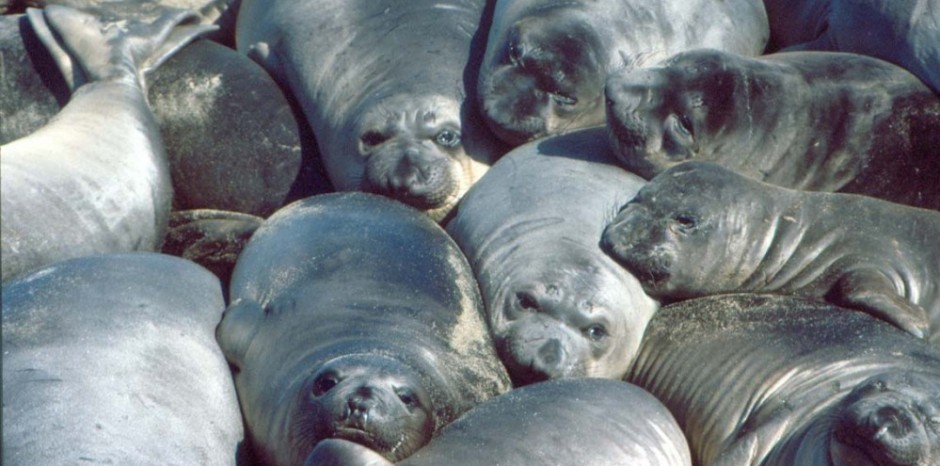Unlike animals that live on land, it is often difficult to determine specifically what marine mammals eat. These animals spend most of their time underwater and are therefore very difficult to observe while feeding. Historically the only techniques that were available were stomach content analysis, collection of scats, or the direct observation of feeding behavior. These techniques all have limitations. Stomach content and scat analysis can only yield information about the animal’s last meal and direct observations of feeding behavior are difficult. In recent years, stable isotope analysis has been effectively used to gain a better understanding of the feeding ecology of many species and even more recently, fatty acid signature analysis has been suggested as an effective tool to understand feeding ecology.
In recent years there have been a number of studies undertaken using stable isotopes of carbon and nitrogen to determine trophic relationships of a variety of birds and mammals. Since the stable isotope ratio of a consumer reflects its diet, consumer tissues have the potential to indicate dietary history. Isotope ratios are determined by the general type of food that has been incorporated into the animal over the past several weeks or months and it gives a good overall idea of the average diet. With multiple types of food generally available, stable isotope signatures can suggest, but cannot prove, that a certain type of food was used; they can however, sometimes indicate when a food has not been eaten. PEBL is currently collaborating with researchers in the United States and Taiwan to determine diet-tissue fractionation and turnover rates of isotopes in bottlenose dolphins. These values are critical in properly interpreting any isotopic signatures from wild dolphins.
More recently, fatty acid signature analysis (FASA) has emerged as another approach to trying to understand what animals are eating and it could overcome many of the deficiencies of other commonly used techniques. FASA has the potential to be able to identify the proportions in the diet of individual prey species. Marine food webs contain many long chain fatty acids that are specific to individual prey items, and most transfer from prey to predator with insignificant alteration in carnivores. There have been a number of studies suggesting a strong relationship between the fatty acid composition of storage tissues in an animal and the fatty acid composition of its prey. As has often been said, you are what you eat! By examining the composition of the fat tissue found in both predator and prey, it is possible to determine what an animal has eaten. Fat stored in the body is composed of a number of different types of molecules, the predominant being fatty acids. In the ocean, fatty acids in plants tend to be very long molecules with lots of branches and extra bonds. When fish eat these plants, they deposit these long chain fatty acids into their fat tissue without changing their shape or structure. If a top-level predator, such as a dolphin or a seal, eats that fish, it too will deposit those same fatty acids unchanged. The combination of fatty acids within an organism is known as a signature and can be visualized as a chromatogram. These data when summarized can then be compared between animals to link them together in a food chain. By comparing the signatures of many prey items (fish) to a predator (dolphin), a much larger food web can be created using a series of equations in a data analysis model.
PEBL has undertaken detailed investigations of the stable isotope and fatty acid composition of the blubber of several species of marine mammals (northern fur seals, various species of cetaceans, and manatees), examined the rate of change in the composition of cetacean blubber as a result of changes in diet, assessed seasonal changes in blubber depth and gross composition of cetacean blubber, and assessed the fatty acid and proximate composition of potential prey species. The ultimate goal of this research is to better understand temporal shifts in dietary preferences (prey composition and size classes) of marine mammals (using stable isotope and fatty acid signature analysis), to assess the seasonal variability of both the stable isotope and fatty acid signatures of significant prey species, and to better understand seasonal variability in the quality of prey species.
Ultimately, the application of either stable isotopes or fatty acids requires knowledge of the composition of all likely prey species, but the benefit is that this approach has the potential to answer questions about what specific prey an individual is consuming. For the past 11 years we have been developing the ability to apply this approach to better understand the feeding habits of dolphins and whales at locations around the world, from the Indian River Lagoon in Florida, to the Pacific Ocean, and off the coast of South Africa.

